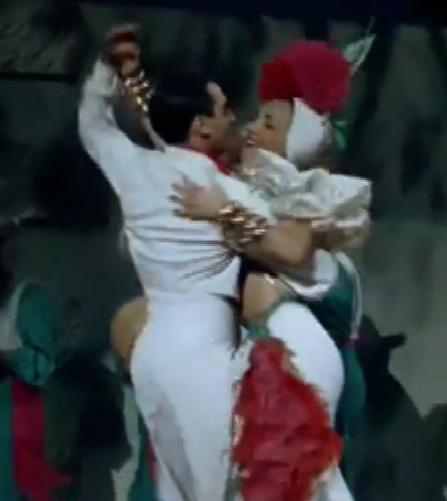 The Samba has its roots in Brazil. Just as the Rumba started as an Afro-Cuban solo dance and was modified to turn it into a ballroom-suitable couple dance, the Afro-Brazilian solo Samba was modified and civilized for the social dancers of North American and Europe.
The Samba has its roots in Brazil. Just as the Rumba started as an Afro-Cuban solo dance and was modified to turn it into a ballroom-suitable couple dance, the Afro-Brazilian solo Samba was modified and civilized for the social dancers of North American and Europe.
It does not seem to have been quite as popular as the Rumba, but was a standard feature of the Latin repertoire starting in the late '30s.
The Samba is in a very lively 2/4 time. To do the basic step, step on every beat. The instructions below are for the basic time step and are for the man. The lady does the opposite. Take small steps. Step on the balls of your feet and keep your knees limber. Let your whole body move to the music.
Each number is a beat.
1. Man steps forward with his left foot.
2. Man steps forward with his right foot.
3. Man steps back with his left foot.
4. Man steps back with this right foot.
Unlike the Rumba, where the partners maintain an open frame, the clear majority of Samba dancers in the films of the time seem to be keeping the close hold of the Foxtrot - while a few take a more open frame, or separate for a few steps and then return to the close hold.
With ballroom Samba dancers, the hip swinging action is there but is a bit more subtle than with the Rumba. When you are in an ultra-close '30s dance hold, just a little hip action goes a long way.
The time step above is the default, when-you-aren't-doing-something-more-interesting step. As with all the other ballroom dances of the time, it's not important exactly what your feet are doing. They go where they have to go to get the job done. What ever you do is fine as long as it works and you stay on the beat. It is, essentially, a Latin One-Step, with all the flexibility that entails.
